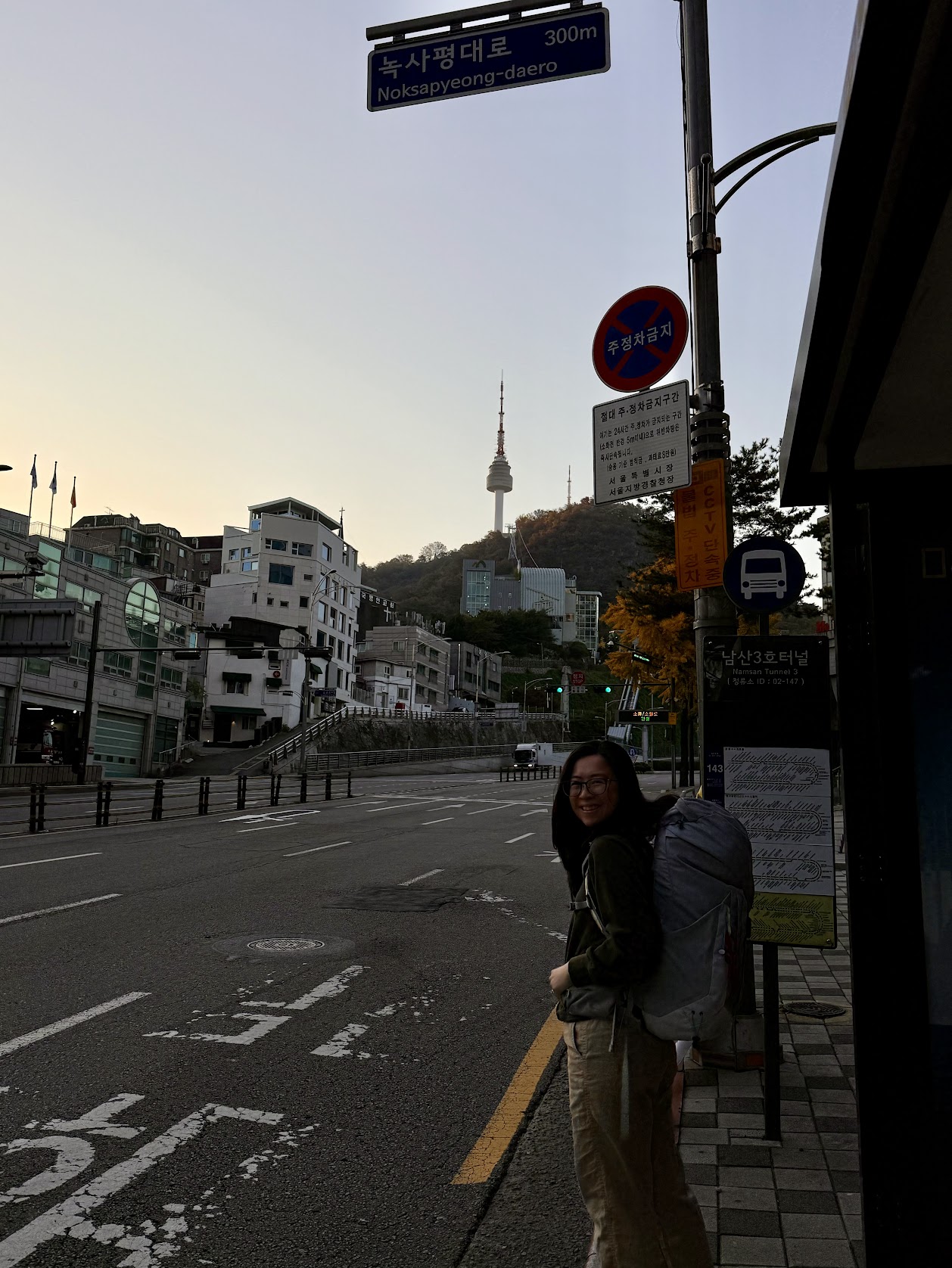Before you head off to the vibrant country of South Korea, here’s a complete list of essentials for travelling in South Korea.


Documents
K-ETA (Korea Electronic Travel Authorisation)
This is required for many nationalities, check if you need this and apply online before arrival in the official website here.
E-arrival card
Separate to the K-ETA above, and its an arrival declaration card which you’ll need to complete online via the official website here and submit within 3 days before you arrive.
International Driving Permit (IDP)
Required of any foreign visitor who is looking to rent a car/small vehicle e.g. electronic 2 person bike (as we found out in Jeju!). Look into how to apply for an IDP in your country.

Navigation apps
KakaoMap and/or NaverMap
You’ll probably realise that Google Maps doesn’t work properly in South Korea), we used both Kakao and Naver, each of these apps have their own pros and cons and we find that downloading and using both to supplement Google Maps while travelling in South Korea was the best way.
Tip: Reviews on restaurants on GoogleMaps are often written by foreign visitors. If you’re a foodie and would prefer the locals’ opinions on where to eat, I highly suggest reading reviews on Kakao and Naver instead! We found gems (many in Korean) through both the apps that weren’t on GoogleMaps.
Kakaotaxi (Kakao T) or Uber
To order a taxi, the top recommended way is to use Kakaotaxi (KakaoT), as it doesn’t implement a random surge in pricing unlike normal taxis do.
KakaoT is a popular taxi-hailing app that many locals use, it has an English interface which makes it accessible for non-Korean speakers like us. However we personally found it a struggle to set up, especially if you have a foreign credit card. There is the option to pay in cash too but for some reason it didn’t work for us.
Which led us to use – Uber. This is a familiar app for those who already use Uber in their country (like us) and it accepts international credit cards. Just ensure your card is enabled for international transactions and I would recommend setting up your card in the Uber app before arriving in South Korea.
The other thing to note is that Uber does have a limited coverage/availability, so if you’re unable to hail a car in the area you’re in, Kakao T would still be your go-to. However, in saying that we had no issues hailing an Uber from Seoul Incheon International Airport to Myeongdeong.
Papago (Naver Papago)
Similar to Google Maps, Google Translator isn’t necessarily accurate in South Korea. Papago is the local translator app that is designed to handle the nuances of the Korean language, so it gives a more accurate translation.
From scanning a snack at the convenience store to typing out a question to ask someone for directions – we used it daily and it was easy to navigate. You can also download the language packs in advance if there is no internet connection.

Transport & more
T-money card
Remember how I mentioned that not all foreign credit cards always work in the country? T-money card is an all-in-one reloadable prepaid card that allows you to electronically:
- Pay at convenience stores
- Travel on public transport e.g. bus, subways (and taxis)
- Make purchases at any other participating stores (look for the T-Money logo)
Throughout our trip, we used a combination of our Wise card, T-money card and cash whenever it’s needed.
We purchased the T-money card at a convenience store and there are plenty everywhere, such as CU, GS25, 7-Eleven etc. The card itself costs KRW3,000 and you can load it with any amount you like. We started off with a small amount, to test how roughly the subway train rides are and continue to top it up at convenience stores whenever we were running out. You can also top up at kiosks in subway stations.
There are other options to purchase the T-money card, including buying it from Klook as a Korean sim card plus T-money package, buying it at Airport Express, buy it as part of the WOWPASS or Discover Seoul Pass.

Adapter
An adapter is often something I forget to check/pack for and figured I should include in this list. The power plugs and sockets (outlets) used are type C and type F and be wart of the standard voltage of 220V.
Simcard/eSIM
There are three major cell networks in South Korea; SK Telecom, KT and LG U+ and there should not be any coverage issues, especially if you’re travelling in major cities.
If you are thinking of getting a physical SIM card, it is best to do so when you first arrive at the airport, especially due to the language barrier and any registration/activation challenges.
We had chosen to go with an eSIM (with data only) which was very easy to purchase via Klook and activate before arriving in South Korea. Almost everything runs via the internet and we had no trouble using only a data only plan.
Cultural
Respect for elders
In Korean culture, elders are deeply respected and this can be seen in various aspect of daily interactions such as:
- public transport: allowing elders to board/sit first in public transport
- dining: waiting for the eldest person to sit down at a dining table and for them to start eating before everyone else does
- drinks: when serving or pouring drinks for elders, the common gesture is to use both hands to pour the drink; on the flip side, when receiving a drink, accept it with both hands and face away (often to the side) of the elder to drink it
communication: bowing and using appropriate language to address/when speaking to older individuals
Similar to many asian cultures, removing shoes before entering homes, especially in traditional accommodations (i.e. hanoks) and even restaurants is customary.
Shoes off indoors
Tip: look for a raised platform or designated space – often there’s a change in the type of flooring (e.g. from concrete to wooden floors) that indicates where to leave your shoes

Ordering food – requiring one meal per person
This was something we did not realise was a norm and must say caught us off guard.
In many Korean restaurants/cafe, it is required that you order one dish per person (i.e. if you are a group of two, each person must order one meal/drink; so some cafes would not allow you to order 1 dessert for 2 people to share).

We truly enjoyed exploring the country and hope that these tips will help you during your next trip to South Korea!




Leave a Reply